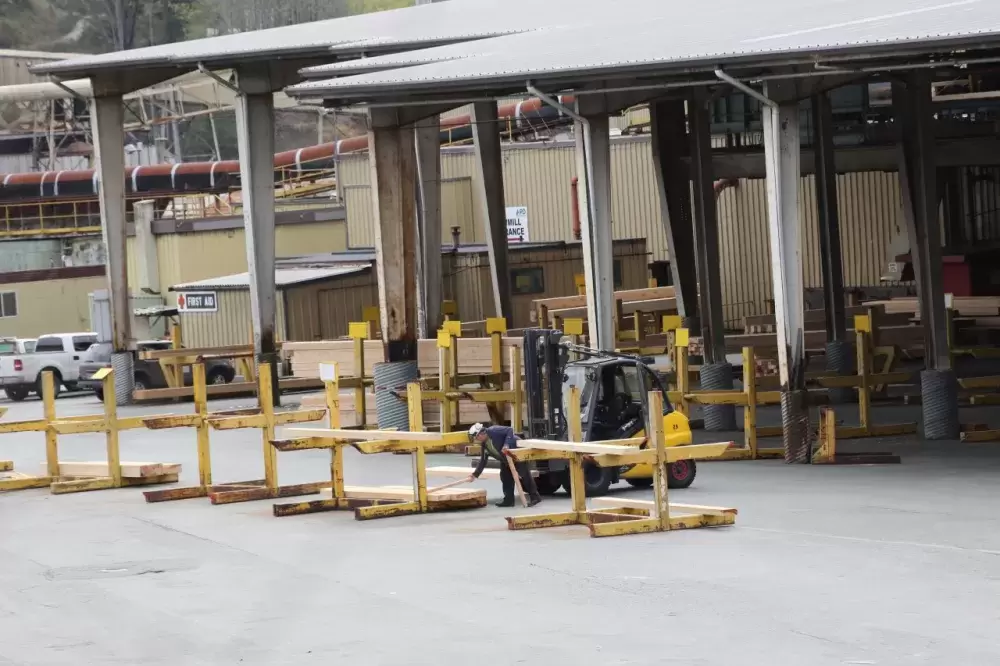With a strike behind them that extends back to early July, the Huu-ay-aht are looking to a new era in forestry where First Nations could play leading role in the industry.
In March the First Nation announced the majority ownership interest of Tree Farm Licence 44, part of a $36.2-million transaction with Western Forest Products that also includes a partial stake in the Alberni Pacific Division, WFP’s only remaining sawmill in Port Alberni. Then on April 7 the Huu-ay-aht’s TFL 44 Limited Partnership announced the end to a strike affecting over 100 workers that has held up harvesting activity on the 232,000-hectare section of Crown land since early summer of 2019.
Largely coinciding with the labour dispute between Western and its employees that was resolved in February, the TFL 44 strike involved United Steelworkers members employed by three contractors operating in the region south of Port Alberni: Island Forest Company, Big Lake Logging and Mount Sicker Timber.
TFL 44 board member Shannon Janzen, who is also chief forester and vice-president of Western Forest Products, said some of the contractors were able to resume work after the Easter weekend.
“They’re having a slow start up to ensure that they have all of their safety plans in place; some contractors started as early as the beginning of this week,” she said on April 14, adding that operations will continue as the COVID-19 pandemic has halted many other sections of B.C.’s economy. “The forest industry has been declared an essential service, so across B.C. there’s been a lot of focus on ensuring that there’s been standards following health authority guidelines, that communities are safe and workers are safe.”
According to the United Steelworkers Local 1-1937, the new labour agreement “generally mirrors” the deal signed by USW and Western in February, gaining back concessions made in 2017 during an extensive layoff for workers. Travel times will return to a more manageable standard, and alternative shifts during non-conventional working hours are reduced, which has been expressed as a safety concern for the union.
“The new agreement returns to industry-standard travel time instead of the two-tiered system in place and also a twelve-month reduction in the term of a substandard alternate shift,” reads a USW statement.
“I’m hoping that over the next five years we’re able to get the maximum benefits from this agreement,” said Robert Dennis Sr., chief councillor for Huu-ay-aht First Nation. “The workers are working longer periods of time, this is critical to have labour peace so that we can have more work for people in the industry.”
The Huu-ay-aht’s majority stake in TFL 44 represents a shift in the history of the section of Crown land. Under various forest management licences and divisions, the land was held by MacMillan & Bloedel from 1955 to 1999. Forestry activity in the area helped to fuel generations of prosperity in the Alberni Valley – but logging took its toll on the territory of multiple First Nations that now call parts of TFL 44 their home. By 1997, near the end of M & B’s tenure, most of the Sarita Watershed was logged, leaving impacts on salmon populations that the Huu-ay-aht still see today.
Now the Sarita is within Huu-ay-aht treaty settlement lands, allowing the First Nation to contribute $5 for every cubic metre of timber they harvest towards the watershed’s renewal. In TFL 44 a similar approach is planned, as future harvesting will help to fund reparation initiatives, explained Janzen, including $350,000 committed over the next three years for watershed restoration work.
“We gratefully accept any contribution and appreciate Western stepping forward with this once we all start working together to tackle this issue,” said Dennis of the watershed renewal work. “We wait now for the province and the feds to participate with the same approach that Western has taken.”
According to TFL 44 management plans, one sixth of the area’s 232,000 hectares is “productive forest land” that could be harvested. Twenty-six per cent of the land base for harvest consists of trees over 250 years old, with much of the remainder consisting of stands 80 years or younger.
Thirteen other First Nations have territory in TFL 44, and the Huu-ay-aht have already begun meetings with some of these groups to increase Indigenous involvement in the section of forest land.
“I think that it brings a strong sense of ownership when a First Nation person can work in their own territory - there’s more pride attached to that, there’s more consideration for other values other than economics,” said Dennis. “We always have to find that happy balance between environmental, cultural, economic. When you start doing that juggling act it becomes really difficult, but it’s better that the First Nations are the jugglers.”
As part of plans to create more work opportunity in their home territory, the Huu-ay-aht have set aside funds to train its members for forestry professions, education that Dennis hopes can expand to other First Nations as more partnership develop to manage TFL 44.
“That’s our goal, is to get our people back into the industry with sustainable jobs,” he said, recalling a time when many First Nations were employed in forestry – representation that has dwindled over the last generation or so. “One time I remember you could go down to the Sproat Lake booming ground and it would be primarily First Nations people down there.”







